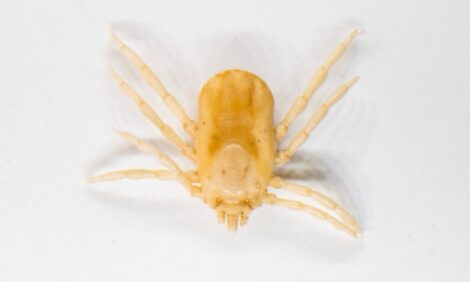



Managing FMD in South America
Livestock producers are active in implementing FMD vaccination programs[Edited version of a report by the World Organization for Animal Health (WOAH), in The State of the World’s Animal Health 20251]
Dr. Francisco D’Alessio, World Organization for Animal Health (WOAH) Regional Representative for the Americas, explained that one of the most critical factors in the successful foot and mouth disease (FMD) vaccination strategies implemented across South America was the active involvement of the private sector and farming communities in the rollout of vaccination campaigns.
Rather than a top-down government-imposed program, livestock producers themselves took an active part in organizing and implementing the vaccination efforts, under the supervision and coordination of the Veterinary Authorities. Each country set up its specific vaccination mechanisms involving local stakeholders under tight official campaign calendars.
In some cases, the private sector fully financed the vaccination process, covering the costs of vaccine procurement and administration. Also, in areas where small-scale or subsistence farmers faced economic hardship, dedicated funds ensured that vaccines were provided free of charge to those unable to afford them.
Strict protocols for transport and storage were also implemented to preserve vaccine efficacy. Vaccines had to be delivered to vaccination centers in refrigerated containers, and vaccination personnel received thorough training in vaccine storage, administration and animal handling.
As a result of these coordinated measures, vaccination coverage increased significantly across the region. Together with surveillance and prevention strategies these measures led to the effective control and progressive eradication of FMD in South America.
FMD vaccination in Argentina
During past outbreaks of FMD in Argentina, vaccination of bovines and buffaloes was an important strategy used to manage the disease, including successful eradication of the disease following improvements to vaccination protocols and the type of vaccines administered.
“Argentina’s success in controlling FMD was the result of a combination of factors: improved vaccines, strong private-sector involvement and strict government oversight. The country’s experience provides a valuable model for other regions striving to eradicate the disease,” said veterinarian Dr. Sergio Duffy, consultant and Senior Technical Advisor from the Center for Animal Health and Food Safety at the University of Minnesota.
Utilizing vaccines that provided longer-lasting protection for livestock was a key factor in the successful management of FMD in Argentina.
Dr. Duffy explained: “Like many countries in South America, Argentina had been trying to control FMD for decades. However, by the early 1990s, the country had a breakthrough with managing the disease. The first major change was replacing the use of saponin-based vaccines containing the plant-derived saponin with oil-adjuvanted vaccines – the adjuvants are the constituents added to vaccines to improve immune responses. These vaccines provided longer-lasting immunity, ensuring that cattle older than two years were protected for at least one year, rather than requiring more frequent revaccination as before.”
“The second key factor was that the National Service for Agri-Food Health and Quality increased the standards for vaccine approval. The number of protective doses required for each vaccine series to be approved was raised, which significantly improved the quality of vaccines used in the field.”
“The third key factor was the direct involvement of the private sector in the financing and management of FMD vaccination programs at the local level, which resulted in improving their compliance and ensuring their continuity,” concluded Dr. Duffy.
References
1 - World Organization for Animal Health (2025). – The State of the World’s Animal Health 2025. Paris, 120pp. https://doi.org/10.20506/woah..... License: CC BY-SA 3.0 IGO.



